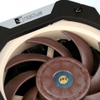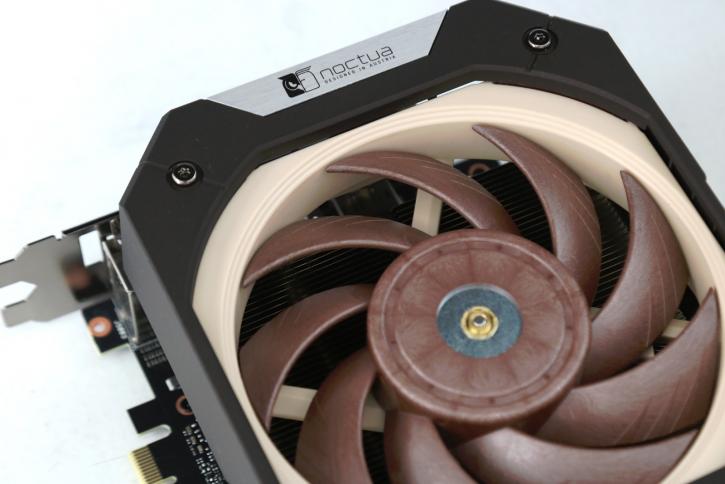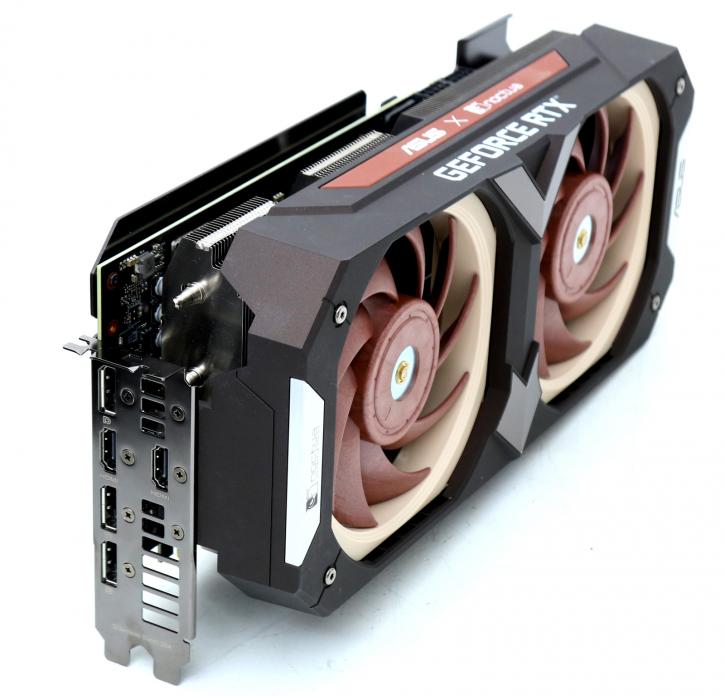Final words and conclusion
Final words
The Noctua OC variant of the ASUS GeForce RTX 3080 performs its duties flawlessly. It is quite quiet and does not require LCS for that. However, I'm going to dispel some myths here: yes, it is exceptionally silent, but so are the more expensive MSI and ASUS graphics cards. Consider the MSI TWiNFrozer and the ASUS STRIX. Therefore, the Noctua card's pricing premium little sense in this regard. It makes sense, though, in terms of overall quality and brand choice. In silent BIOS mode, this card is horrendously silent Moreover, many of us have been longing for a Noctua cooler graphics card for quite some time. You do not purchase this device for its beauty; I guess what I'm saying is that the 4 slots surprised everyone. When we return our attention to game performance, we are looking at performance differences ranging from 2% to 4% in the most GPU-stressed situations (measured from the founder edition as baseline). The card excels, though, if you begin to tweak it you can reach close to 2100 MHz on the boost (dynamic) frequency. Even though it's a subjective statement, the card's brown/beige color scheme may not be to everyone's liking, but it doesn't bother me in the least. A dual BIOS is convenient as a fail-safe as well as for switching and selecting between the most silent and OC modes. Unfortunately, the OC BIOS mode does not give any major performance gains, therefore I recommend leaving it at its default setting (silent).
Performance
Our performance section is a generic portion included in all RTX 3080 reviews, as performance is virtually identical across all cards and brands. It excels at gaming and shows proper values. Yes, Full HD is frequently bottlenecked and CPU constrained. However, even in these cases, a few games with competent programming and the right API (DX12/ASYNC) exhibit a startling boost in performance. The rasterizer engine first, as it is still the most important aspect. There are so many shader cores that the tested graphics card was never slower than an RTX 2080 Ti. The good news is that any game that use conventional graphics will perform admirably at 3840x2160. Games capable of raytracing and managing DLSS are also playable in UHD. Battlefield V with Raytracing and DLSS enabled in Ultra HD currently runs at 75+ frames per second. You've seen the figures in the review, so I'll now quiet myself. Gen 2 RT and tensor cores have been added to the RTX 30 series to improve DXR Raytracing and tensor performance. Don't let the number of RT and Tensor cores mislead you. They become more effective as a result of their proximity within the rendering engine.
Cooling & noise levels
I think we said it all, the card in the silent BIOS mode is just that, silent and can not be heard. The lowest we can measure is 29~30 DBa and the card is merely slightly above that value at 31-32 DBa. The performance offers marginally better perf, but at the cost of slightly worsened acoustics at ~37 DBA; which is still considered to be silent. Leave it at default (silent BIOS mode) as that's what you're buying this product for. At silent BIOS mode your items under load will hover at 70 degrees, and with perf mode that goes down to 63 degrees C. All excellent values. We do have to say that the thermal image for performance mode looks mighty good. However, if you are considering a Noctua cooling-based product, then your priority very likely is the lowest acoustics possible.
Energy
The power draw under intensive gaming for GeForce RTX 3080 remains to be significant. We measured it to be close to the 360 Watt range. This is the tradeoff for a bit more bite in performance for this graphics card model in particular. Now that is a peak value under stressed conditions. Gaming wise that number will fluctuate a bit. Are we happy with that amount of energy consumption in the year 2020? No, not at all. Will you, as an end consumer care about it? We dispute that as well.
Tweaking
The card tweaks well. At defaults, the GPU hits the power limiter pretty much constantly, so that's your first and quickest option to tweak. You get extra perf on the card's default power budget. The clock frequency can take a good 100 MHz extra on the boost frequency as well. Apply these two and you'll see the GPU boost clock hovering in the ~2000 domain (frequencies vary per game title as they are dynamic). The memory could be tweaked to 16 Gbps, so all in all these are terrific values bringing 8% additional performance on stringent GPU situation, measured from founder edition level performance.
Conclusion
High-end graphics cards adhere to a tried-and-true formula; think the STRIX series, which has been a consistent success with very few alterations. Choosing a vendor these days is based on aesthetics, cooling performance, and, in 2022, availability. Most cards perform similarly and with that in mind, I'm beginning to appreciate what ASUS attempted with the Noctua Edition RTX 3080; it's something fresh, a different approach, and we dig it. It truly is one of the quietest high-end graphics cards on the market, however, it comes at the expense of a big 4-slot form factor and two high-quality yet brown/beige colored fans. In its default setup, the end result is a nearly silent product. Because of the incredibly low noise levels, this product can be slightly more expensive. Nauseating prices ... when released back in 2020, the 3080 Founder edition carried an MSRP of 699 USD. Then came the clusterfrack that is mining and COVID. Prices went up. The same FE card now costs 1000 USD/EUR. The Noctua card as tested sits at roughly 1100 USD/EUR, which is a huge no-go zone. The acoustic and temperature performance are both excellent; the appearance, while minor, does not detract from the performance. Overall, from an audiophile standpoint, the device has a lot of advantages. However, there are several luxury items on the market that perform similarly in terms of acoustics and appearance. Perhaps in the future, in addition to the DUAL, TUF, and STRIX lines, we'll see cards based on an ASUS Noctua line, targeted to individuals who require exceptionally low noise operation. And this is where we should stop. The release of the Noctua 3080 is an interesting card for the general public, if you're lucky, you'll be able to find one in retail. Recommended for individuals looking for truly silent operation. The price tag for a high-end graphics card however is outside the realm of realistic parameters.
Sign up to receive a notification when we publish a new article.
Or go back to Guru3D's front page
- Hilbert, LOAD"*",8,1.




